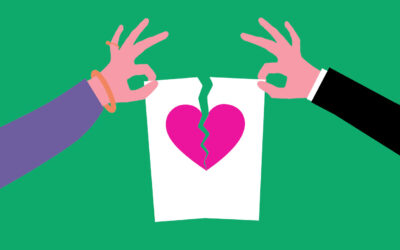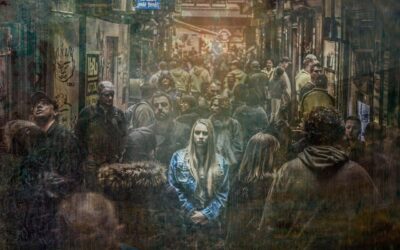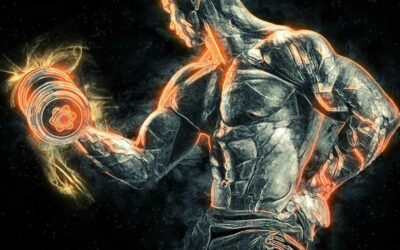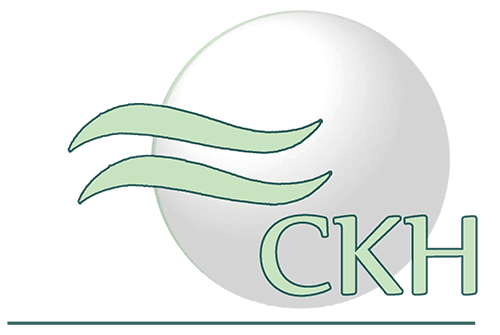In this article, Antonie Peppler, the founder of Creative Homeopathy, put a new perspective on the topic of “Initial Aggravation” as a form of after-action towards specific homeopathic remedies. Further, she touches on symptom language and how our subconscious mind communicates messages through the body—that we call somatization.
Initial Aggravation – Potencies –
Theory of Therapeutic Action
Homeopathy is known as the “Crown” of therapies. A crown radiates in its sublimeness. It is sacrosanct and is worshiped – but you are not allowed to touch it. Homeopathy today carries this image of a peak. It is considered to be difficult, if not impossible, to learn. Mistakes in the treatment are supposedly dangerous. In short, anyone who is willing to take responsibility for his patients and their treatment would be better off leaving homeopathy alone, or they should be prepared for an arduous 20-year trek through the theory.
If Hahnemann had known what would be made out of his work after his death, he indeed would have expressed himself differently in many places in his Organon, choosing a more uniform language and not integrating his personal development step-by-step in the different versions, but all at once in a single Organon version. Although the Organon is written in numbered paragraphs, it is by no means unambiguous and certainly not to be considered a code of law. Significant misunderstandings concerning the initial aggravation, the potency, and the theory of therapeutic action must be disclosed and discussed.
Initial Aggravation, Potencies
In § 63 to § 66 of the Organon, 6th edition, Hahnemann describes the initial action and the counter-action (after-action).
Organon § 63
“Each life-impinging potence, each medicine, alters the tuning of the life force more or less and arouses a certain alteration of a person’s condition for a longer or shorter time. This is termed the initial action. While the initial action is a product of both the medicinal energy and the life force, it belongs more to the impinging potence [of the medicine]. Our life force strives to oppose this impinging action with its own energy. This back-action belongs to our sustentive power of life and is an automatic function of it, called the after-action or counter-action.”
Samuel Hahnemann
Here Hahnemann is describing the reaction to a homeopathic remedy as defiantness. Something is stimulated in the system, then it resists the impulse and finally accepts it.
Organon § 64
“As seen from the following examples, during the initial action of the artificial disease potencies (medicines) upon our healthy body, our life force appears to comport itself only conceptively (receptively, passively as it were) and seems as if it were forced to allow the impressions of the artificial potence impinging from without to occur in itself, thereby modifying its condition.
The life force then appears to rally in one of two ways:
- Where there is such a one, the life force brings forth the exact opposite condition-state (counter-action, after-action) to the impinging action (initial action) that has been absorbed into itself. The counter-action is produced in as great a degree as was the impinging action (initial action) of the artificial morbific or medicinal potency on it, proportionate to the life force’s own energy.
- If there is no state in nature exactly opposite to the initial action, the life force appears to strive to assert its superiority by extinguishing the alteration produced in itself from without (by the medicine), in place of which it reinstates its norm (after-action, curative-action).”
Here Hahnemann is again describing a reaction of defiance. In point (1), he determines that not all substances produce a defiant response and, most importantly, that the potency has a counter-action “in as great a degree as was the impinging action” of the remedy. It must still be ascertained what, according to Hahnemann’s experience, determines the degree. One might understand that a high potency remedy, such as a C 50,000, would produce a quick, prominent, and influential counter-action. In this case, it would be dangerous to prescribe a remedy that causes a defiant reaction in high potency.
Practical Experience of Potency
Practical experience, however, shows us something entirely different. A low potency creates a much more intense initial action and counter-action than a high potency. That Hahnemann also had this experience, we discover in § 65.
In § 64 (2), he describes the remedies that do not produce a counter-action, asserting their superiority. In other words, the remedy produces a type of “manipulation” that is surprisingly supposed to bring about healing.
To understand what Hahnemann is saying here, it is necessary to contemplate the theory of how a homeopathic treatment works. Hahnemann describes this in varying ways in numerous places in the Organon. More will be said about this in the “Theory of Therapeutic Action section.”
Organon § 65
“Examples of initial actions upon the life force which are followed by opposing counter-actions (point 1 above) are familiar to all:
- A hand bathed in hot water is much warmer than the other unbathed hand (initial aggravation), but once it is removed and thoroughly dried, it becomes cold after some time and much colder than the other hand (after action).
- A person heated by vigorous exercise (initial action) is afterward assailed with chilliness and shivering (after-action).
- To someone who yesterday was heated by drinking a lot of wine (initial action), today, every light breeze is too cold (counter-action of the organism, after-action).
- An arm immersed in the coldest water for a long time is at first far paler and colder than the other one (initial aggravation). Still, once it is removed from the cold water and dried off, it becomes warmer than the other and hot, red, and inflamed (initial aggravation of the life force).
- Excessive liveliness results from drinking strong coffee (initial action) but sluggishness and sleepiness remain for a long time (counter-action, after-action) unless this is taken away over and over again by drinking more coffee (palliative for a short time).
- The heavy, stuporous sleep caused by opium (initial action) is followed the next night by more significant insomnia (counter-action).
- After constipation engendered by opium (initial action), diarrhea ensues (initial aggravation).
- After the purging produced by bowel-stimulating medicines (initial action), constipation of several days’ duration results (after-action).
And thus, after each initial action of a homeopathic potency that in large dosage strongly modified the condition of the healthy body, our life force always and everywhere brings to pass, in the after-action, the exact opposite (when, as stated, there is such).”
In § 65, Hahnemann gives us several examples of initial action and counter-action when a substance is taken in its mother tincture. His comment at the end is fascinating, where he notes that medicines in large dosages call forth a strong counter-action. Here it becomes apparent that when he mentions a “large dosage,” Hahnemann refers to a potency-containing substance or even the substance itself in its mother tincture. Consequently, a “small dosage” must refer to a higher dilution or higher potency.
Organon § 66
“A conspicuous opposed after-action will not be perceived in the healthy body with the impinging action of quite small homeopathic doses of tenement-altering potencies. This is understandable. To be sure, all of these potencies, in small doses, bring forth an initial action that is perceptible with due attention. Still, in return, the living organism produces only as much counter-action (after-action) as is required to restore the normal state.”
Samuel Hahnemann
Hahnemann says here clearly: the higher the potency of the given remedy, the smaller (or even lacking) the counter-action.
“If the potency chosen is high enough, there is no initial aggravation!
In Hahnemann’s Organon “small dose” must always be understood as “high potency.”
Further indications of this understanding can be found in the following places: § 39 footnotes 1, § 155, and § 157.
The practicing homeopath experiences that after giving a high potency dosage, the patient reacts with symptoms. What else are these symptoms if not counter-action or after-action = initial aggravation?
Let us assume that every homeopathic remedy mirrors some life situation. Situations in life, however, are always interconnected. When the homeopath addresses a particular problem by giving a homeopathic remedy in high potency, the patient reacts immediately (often within minutes) with symptoms. These symptoms now describe a life situation connected to the information in the remedy given.
Patient Example
A young woman is suddenly left by her partner.
- This contains the shock of being left behind
- and at the same time, the sorrow relating to that
- and at the same time, she immediately attempts to play a role in which her partner would have liked to have seen her.
The following remedies and their psychological significance apply to these themes (according to Antonie Peppler):
| Aconitum napellus | Negative thoughts to protect oneself |
| Natrium muriaticum | Sorrow, holding onto the past |
| Lachesis muta | Suppression of the individuality |
If this woman is treated by a homeopath, one of the symptom pictures of these remedies will be found among the patient’s symptoms. If the patient is given Natrium muriaticum, for example, then the symptoms of Aconitum, which belongs to the situation complex, immediately come to the surface. If this reaction is understood as an initial aggravation, the homeopath loses his chance to address the central theme and dissolve the patient’s interconnected complex of situations.
Suppose the homeopath is clear about the interconnected themes of the patient. In that case, an exact computer repertorization shows them precisely – then it is beneficial to give the different remedies all at the same time, even in high potency. In this manner, the entire symptom complex of the patient, corresponding to her interrelated experiences, will be immediately resolved. When all of the interconnections are considered, the patient will be healed in the shortest time. Homeopathy is not dependent on time!
Theory of Therapeutic Action
In § 64 and also in other paragraphs, Hahnemann speaks of:
- the artificial disease or medicinal potency
- the effect of the artificial disease or medicinal potency
Just what does Hahnemann mean when he speaks of a homeopathic potency as “artificial?”
Is he of the opinion:
- that the homeopathic remedy is a foreign body
- or that the homeopathic remedy creates a resonance in the body, that is, there is the appearance of something foreign being brought into the body, and it is recognized as something already existent there?
- It isn’t easy to imagine that something foreign could affect healing. A manipulation – also through a foreign body – will undoubtedly create a new set of symptoms. Still, it will be necessary, as is familiar to us in allopathic medicine, to continue administering the manipulation in ever-stronger doses if its effect is to be maintained. Hahnemann called this type of manipulation a “palliative.”
If the medicine were a foreign body, the homeopath would need to induce this foreign body into the patient’s body and then wait to see what happens. A foreign body is unpredictable. For this reason, it would make sense to use a “small” foreign body (low potency) so that the unexpected does not become too catastrophic.
This dubious theory is the one that most homeopaths follow today!
- If homeopathy is understood as resonance therapy, then the homeopathy remedy creates resonance with a situation that has not been evaluated or mastered. The remedy works like a mirror.
Suppose a resonance to the theme of the remedy is present. In that case, the patient is led back into the unmastered life situation – she can see and experience it again – but can reevaluate it with her current and perhaps more mature outlook. In the case of newborns, this insight will be derived from the experience of the ancestors or, for those who prefer, from the process of reincarnation.
Homeopathy as Resonance Therapy
Homeopathy, as resonance therapy, is not dangerous, for only those themes that come into resonance are addressed. These are the themes of illness already present in the patient in the first place.
Every patient reacts to a homeopathic dose according to his or her subconscious experience. This is also true for remedy provings. The test person will produce a symptom picture of what is “reflected in his inner mirror.” This is why different test persons produce different sets of symptoms. Remedy provings are generally carried out using low potencies up to C 30. These produce many physical symptoms that need interpretation to find the remedy’s theme. Most of the time, provings are limited to the identification of symptoms. Only in recent times have the psychological themes of homeopathic remedies, occasionally known as their essence, become more critical.
Hahnemann’s Case Histories
Through these few examples, it becomes clear that perhaps Samuel Hahnemann had another intention for “his” homeopathy and practiced it differently than is taught today. Based on Hahnemann’s patient cases, which are becoming increasingly available, one can follow his actual procedure better than in the paragraphs of the Organon, which have been revised six times. The “Krankenjournale” [Case Histories] of Samuel Hahnemann is also recommended for further study.
In addition to the topics discussed above, several other places in the Organon could benefit from an analytic and synergetic study. We go into these topics in detail in the courses I have held for years. A complete analysis of the Organon in its sixth edition would surpass the limits of this article. The intention here is to convey a perception of the grand possibilities contained in Homeopathy so that it may be utilized in a manner that is often more effective than is typically the case.
Original Sources:
- Hahnemann, Samuel, “Organon der rationellen Heilkunde,” 1. Auflage, 1810 in der Arnoldischen Buchhandlung.
- Hahnemann, Samuel, “Organon der Heilkunst,” 2. Auflage, 1819 in der Arnoldischen Buchhandlung.
- Hahnemann, Samuel, “Organon der Heilkunst,” 3. Auflage, 1824 in der Arnoldischen Buchhandlung.
- Hahnemann, Samuel, “Organon der Heilkunst,” 4. Auflage, 1829 in der Arnoldischen Buchhandlung.
- Hahnemann, Samuel, “Organon der Heilkunst,” 5. Auflage, 1833 in der Arnoldischen Buchhandlung.
- Hahnemann, Samuel, “Organon original, Organon der Heilkunst,” 6. Auflage, Barthel & Barthel Verlag.
- Hahnemann, Samuel, “Krankenjournal D 2, 1801 – 1802,” Karl F. Haug Verlag.
- Hahnemann, Samuel, “Krankenjournal D 3, 1802,” Karl F. Haug Verlag.
- Hahnemann, Samuel, “Krankenjournal D 4, 1802 – 1803,” Karl F. Haug Verlag.
- Hahnemann, Samuel, “Krankenjournal D 5, 1803 – 1806,” Karl F. Haug Verlag.
- Hahnemann, Samuel, “Krankenjournal DF 5, 1837 – 1842,” Karl F. Haug Verlag.














No real corrections here